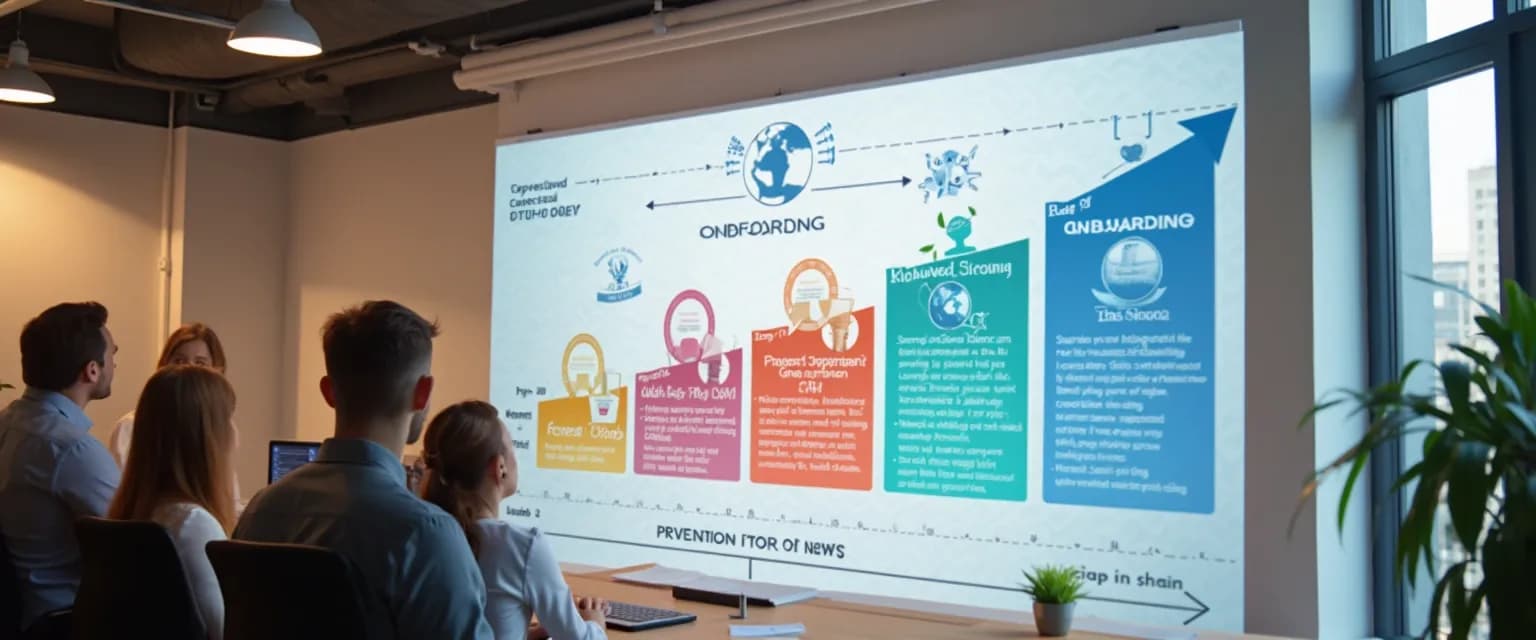How to Integrate EQ in Business: A 90-Day Onboarding Blueprint
Transforming new hires into emotionally intelligent team members starts on day one. When businesses invest in EQ in business practices from the beginning, they see dramatic improvements in employee integration, team cohesion, and ultimately, performance. Yet despite mounting evidence supporting emotional intelligence as a critical workplace skill, most onboarding programs still focus exclusively on technical training and procedural knowledge—missing a tremendous opportunity to develop EQ from the start.
Traditional onboarding often emphasizes what employees need to do rather than how they should interact and respond to workplace challenges. By integrating emotional intelligence development into your onboarding process, you create a foundation for stronger workplace relationships, better conflict management, and increased resilience. This 90-day blueprint provides a structured approach to incorporating EQ in business from the moment new employees join your team.
Research shows companies with strong EQ in business practices experience 63% lower turnover and 58% fewer conflicts than organizations without structured emotional intelligence training. Ready to transform your onboarding? Let's explore how to implement a comprehensive 90-day EQ development program.
Building EQ in Business: Days 1-30 Foundation Phase
The first month of onboarding sets the tone for an employee's entire journey with your company. This foundation phase focuses on establishing baseline EQ metrics and introducing core emotional intelligence concepts that support business success.
EQ Assessment Implementation
Begin with a comprehensive emotional intelligence assessment during the first week. Tools like the Emotional and Social Competency Inventory (ESCI) or the Emotional Intelligence Appraisal provide valuable baseline data that informs personalized development plans. This initial measurement helps new hires understand their current EQ strengths and growth opportunities while giving managers insight into how best to support them.
Schedule three 30-minute micro-learning sessions weekly, focusing on self-awareness, emotional regulation, and empathetic listening. These bite-sized learning opportunities make EQ in business concepts digestible and immediately applicable to daily work situations.
Mentor-Mentee EQ Matching
Pair new employees with mentors who demonstrate complementary emotional intelligence strengths by the end of week two. These strategic pairings create natural opportunities for social connection development while providing real-time EQ modeling. A structured weekly check-in between mentors and mentees, guided by specific EQ-focused discussion prompts, reinforces learning and application.
By day 30, new hires should complete their first self-reflection exercise, documenting specific instances where they applied emotional intelligence concepts in workplace interactions.
Advancing EQ in Business: Days 31-60 Integration Phase
The second month transitions from individual EQ awareness to collaborative application. This phase integrates emotional intelligence into team dynamics and cross-functional relationships.
Team-Based EQ Activities
Implement weekly team challenges designed to exercise specific EQ competencies. These might include empathy-building exercises, constructive feedback exchanges, or collaborative problem-solving scenarios that require emotional regulation. These activities demonstrate how EQ in business practices enhance team performance and create psychological safety.
Introduce "EQ moments" during regular team meetings—brief opportunities for team members to recognize instances where emotional intelligence positively impacted outcomes. This practice normalizes EQ discussions and reinforces its value in everyday business operations.
EQ Progress Measurement
At the 45-day mark, conduct a mid-point assessment comparing current emotional intelligence application against baseline measurements. This creates accountability while celebrating progress. Managers should schedule focused feedback sessions highlighting specific examples of resilience development and emotional competency growth observed in the new hire.
Maximizing EQ in Business: Measuring Your 90-Day Success
The final month focuses on measuring outcomes and establishing long-term EQ development habits. By day 90, new employees should demonstrate measurable improvement across key emotional intelligence competencies.
Conduct comprehensive assessments comparing pre- and post-program EQ metrics, with particular attention to business-relevant applications. Document specific examples where improved emotional intelligence directly impacted business outcomes, such as successful client interactions, conflict resolution, or innovative problem-solving.
The most successful EQ in business programs don't end at 90 days—they transition into ongoing development. Establish quarterly EQ check-ins and create personalized emotional intelligence growth plans aligned with performance goals. Organizations that maintain this focus see continued improvements in communication effectiveness, leadership potential, and overall workplace satisfaction.
By implementing this structured approach to EQ in business development during onboarding, you create a competitive advantage through emotionally intelligent teams equipped to handle challenges, collaborate effectively, and drive business success from day one.




